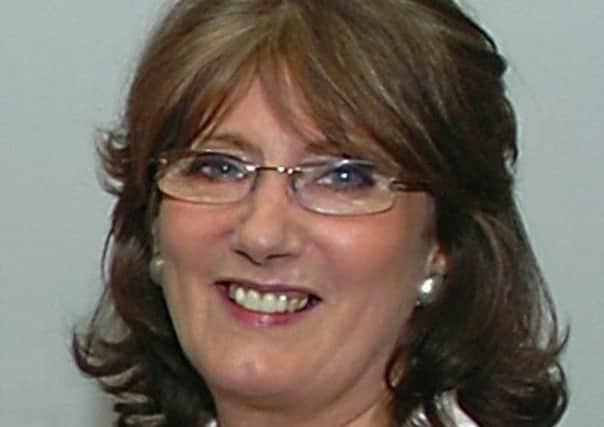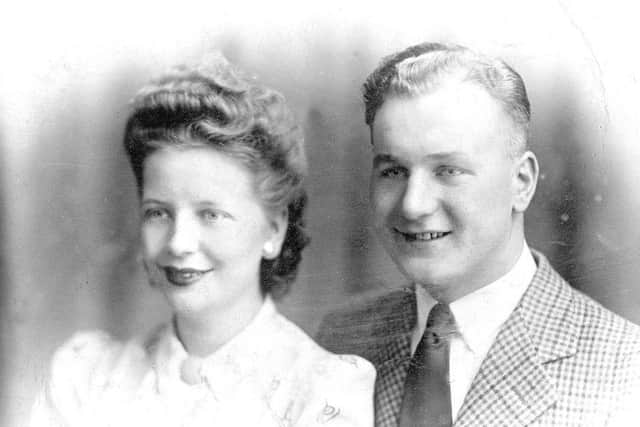The Nostalgia column with Margaret Watson - Dewsbury jeweller Jim Brown


Jim, born and raised in Eastborough, served with the RAF during the Second World War, most of that time in the Far East.
When he returned on leave, he discovered his father had died two years earlier while Jim was caught up in the retreat from Singapore.
Advertisement
Hide AdAdvertisement
Hide AdJim was later to marry his sweetheart Joan and the couple would work together to set up Jim’s jewellery business in Dewsbury town centre.


This week we continue Jim’s narrative of his experiences after the Japanese invaded Singapore and Jim and his comrades were left in the words of Jim as “sitting ducks”.
Jim would remember for the rest of his life what followed, the turmoil and devastation after the relentless bombing by the Japanese.
The date was December 7th 1941 and Jim was aged 21. Many of his comrades had been killed, and those remaining were ordered by officers to “Get out if you can!”
Advertisement
Hide AdAdvertisement
Hide AdThere was no transport and so Jim set off running towards the docks to find a ship.
He later recalled: “I thought I was Tarzan. I’d watched all the Tarzan films and thought I was like him.
“I just ran and eventually found a submarine, HMS Truant, but the captain couldn’t let me on board and I later learned it had been sunk.
“I spent the next four months trekking through the jungle, hiding from the enemy and living off bananas.
Advertisement
Hide AdAdvertisement
Hide Ad“Eventually I got a ship which took me to Australia and many months later I found myself back in England.
“I got two weeks leave and went home to marry my sweetheart, Joan, by special licence, and then returned to base.
“This was when I fell to pieces and the nightmares began. I suddenly found myself paralysed. I couldn’t move. I spent three months in a wheelchair. I daren’t sleep without the light on and I had the same nightmare night after night.
“I got over it and was soon back to grade one and playing rugby union for Wolverhampton. I was also promoted to sergeant.
Advertisement
Hide AdAdvertisement
Hide Ad“After the war I returned to Dewsbury and set up my own jewellery business with Joan
“We hadn’t anything to put in the window so we filled it with all our wedding presents – not to sell – but just to fill the window.
“After the war, people didn’t have much money to buy jewellery, so most of our work was repairing watches and clocks. I also got the contract from the old Dewsbury Council to look after all the municipal clocks in the borough and also to look after the time clocks which were fitted to every gas lamp.
“The business grew and we ploughed all the profits back into it, and two years later we took over Newton’s Jewellers in Westgate where we remained ever since.”
Advertisement
Hide AdAdvertisement
Hide AdAs Jim’s business prospered, he was able to indulge himself in one of his favourite sports – greyhound racing – and he became a successful owner of greyhounds.
But Jim never forgot his childhood or the debt he owed to his family, friends and teachers, which prompted him to give generously to many local causes.
He was always proud of the achievements of young people, and presented gold watches to a number of local sports personalities, including channel swimmer Eileen Fenton and the Dewsbury Olympic swimmer Jean Oldroyd.
He presented the Jim Brown Trophy, known as the Heavy Woollen Cup, which is still competed for by local amateur RL clubs.
Advertisement
Hide AdAdvertisement
Hide AdJim also became chairman of two local charities - The Dewsbury Children’s Summer Holiday Fund and the Dewsbury Sick Poor Trust.
Jim’s son, Stuart Brown, was invited to take over as chairman following his father’s death. The Trust is still going strong but is known today as The Cardwell Angels.
Jim always remembered the first holiday he ever had while a pupil at Eastborough Junior School, which was paid for by the Dewsbury Summer Holiday Fund.
This charity provided holidays for children from poor families who had never been to the seaside, and the children were accompanied there by local school teachers.
Advertisement
Hide AdAdvertisement
Hide AdThe year Jim went was the year they went to Bridlington where they stayed for a week. He was aged abut 10.
Jim recalled: “All the children on that trip from Dewsbury had never seen the sea before. If it hadn’t been for this charity, these holidays wouldn’t have happened.”
Jim always believed that it was the kind of upbringing he received from good parents and teachers which formed his character.
He was one of thousands of young men from Dewsbury who served in World War Two, many of them stationed in the Far East, and some would never return.
Advertisement
Hide AdAdvertisement
Hide AdJim, who had played professional rugby with Dewsbury Rugby League Club, was extremely fit, and joined the RAF at the beginning of the war.
He enlisted in 1939 at the outset of war, and when he arrived in Singapore, the Japanese had not entered the war and things were quite peaceful.
Jim and his comrades were able to live in beautifully equipped barracks complete with tennis courts and swimming pool – but that wasn’t to last.
During the two years he was there, Jim was to experience a series of escapes from the Japanese involving him travelling through several countries, including, Siam, Malaya, Java, Sumatra, Australia and finally home, via America.
If you have memories or photographs of Dewsbury contact [email protected].